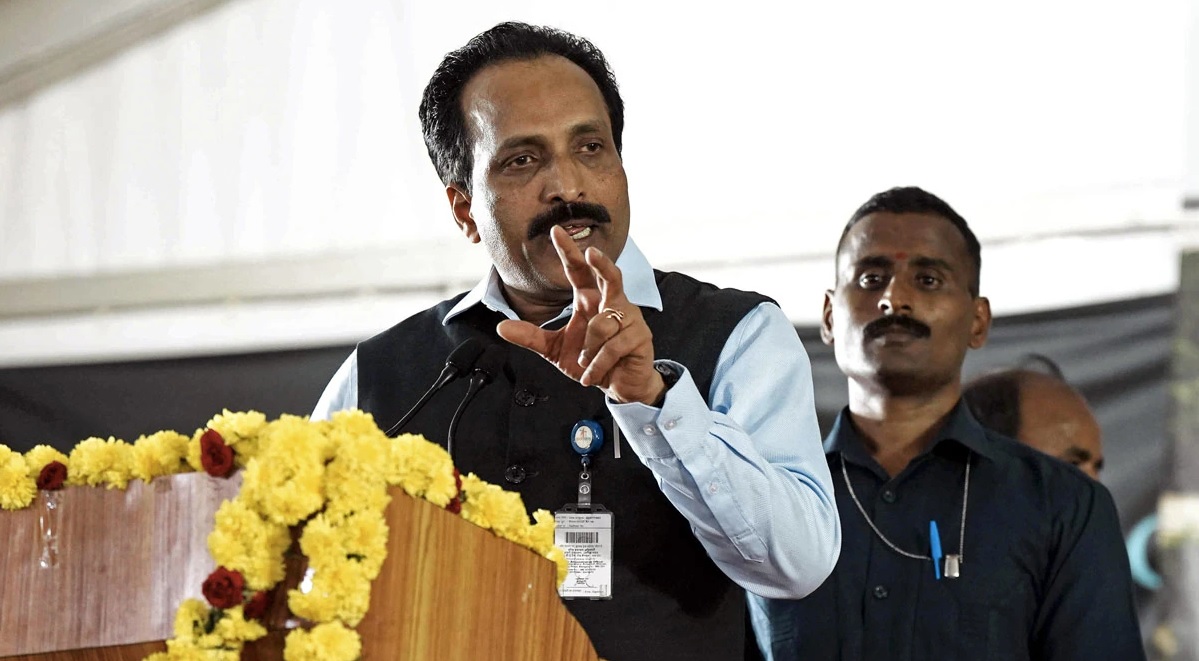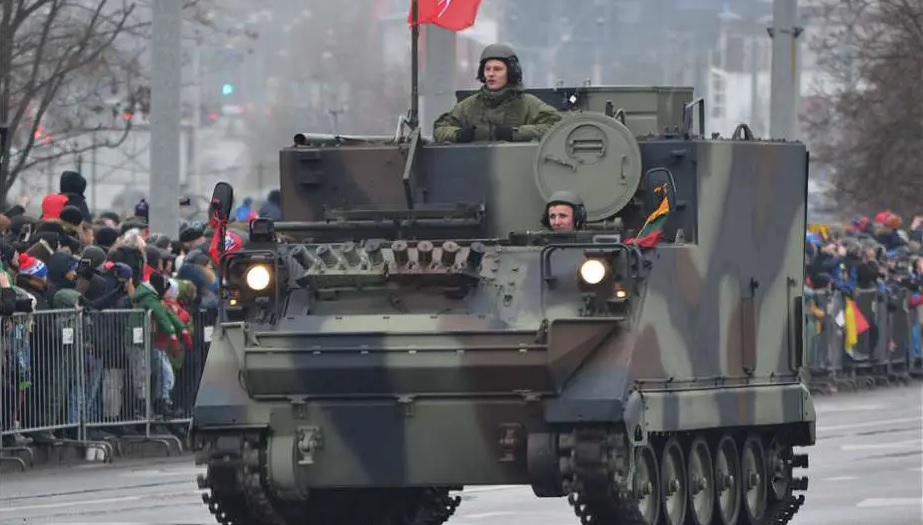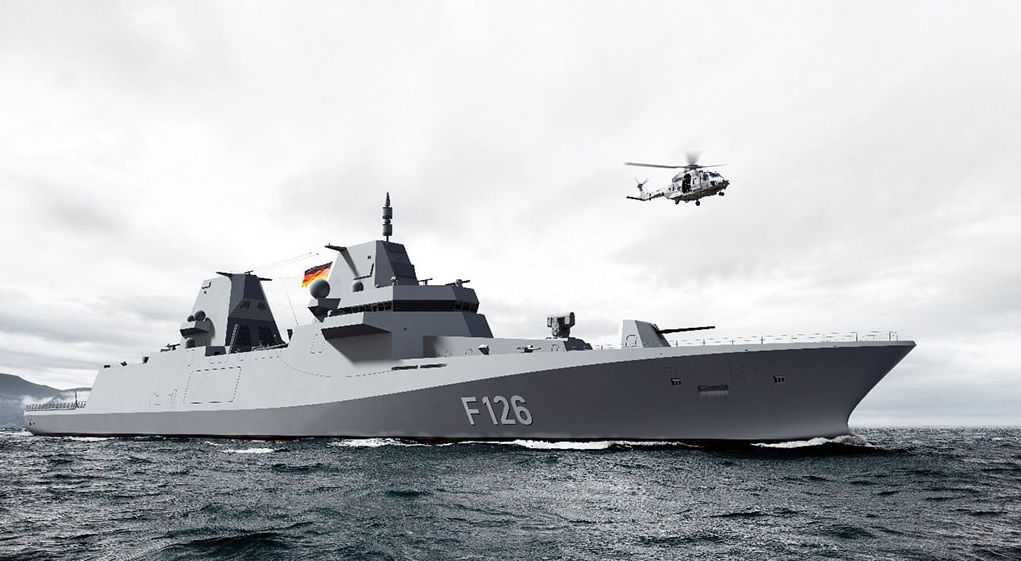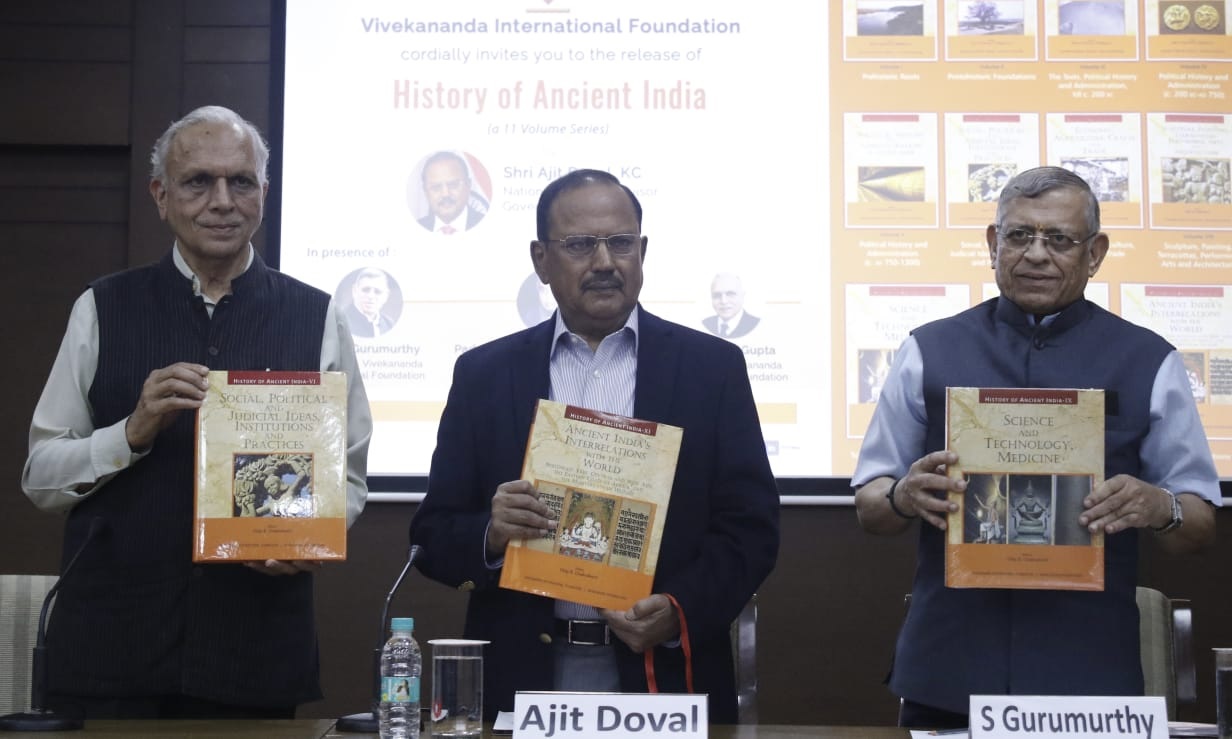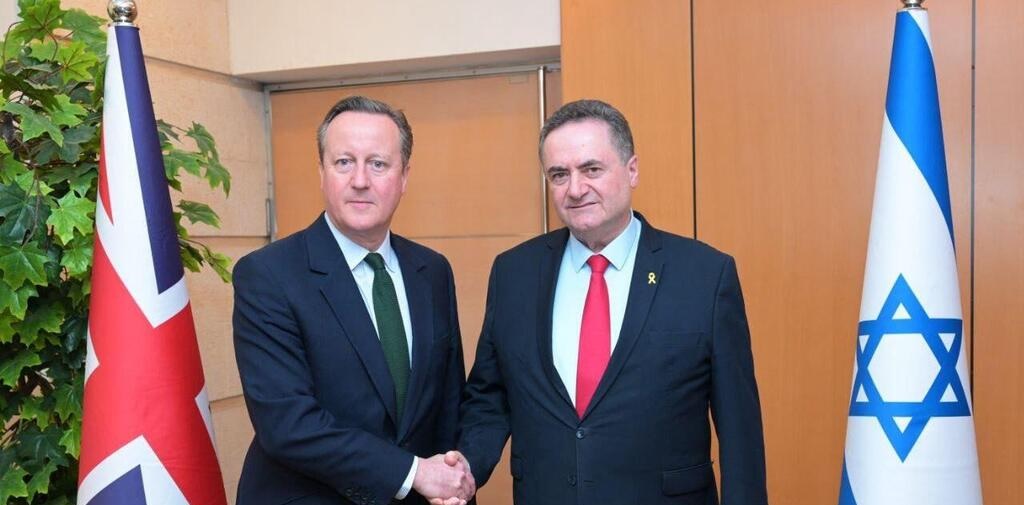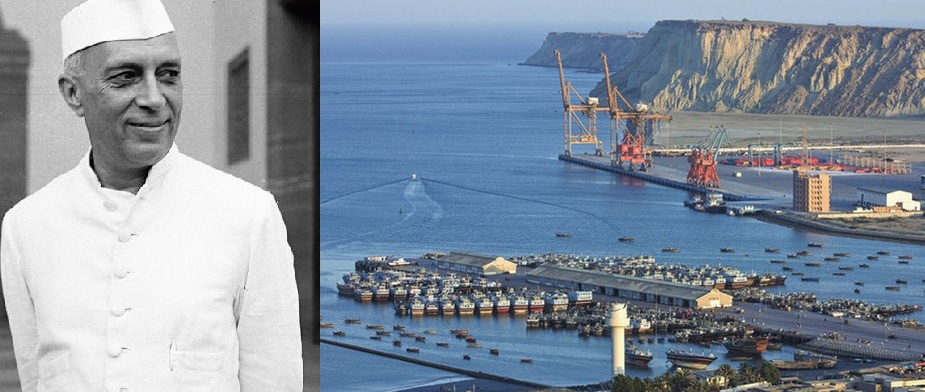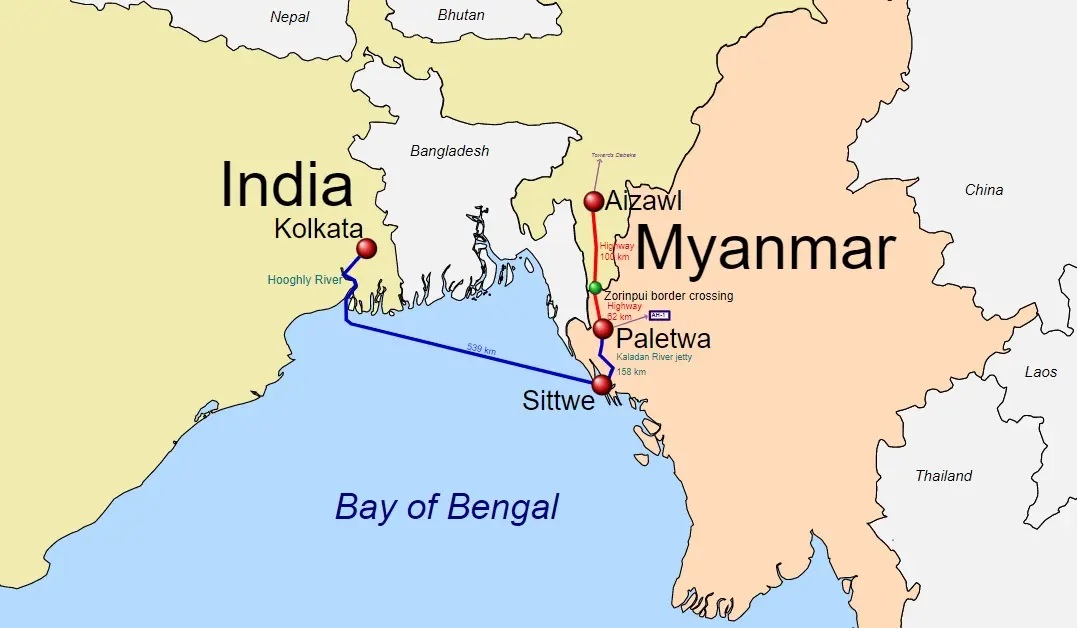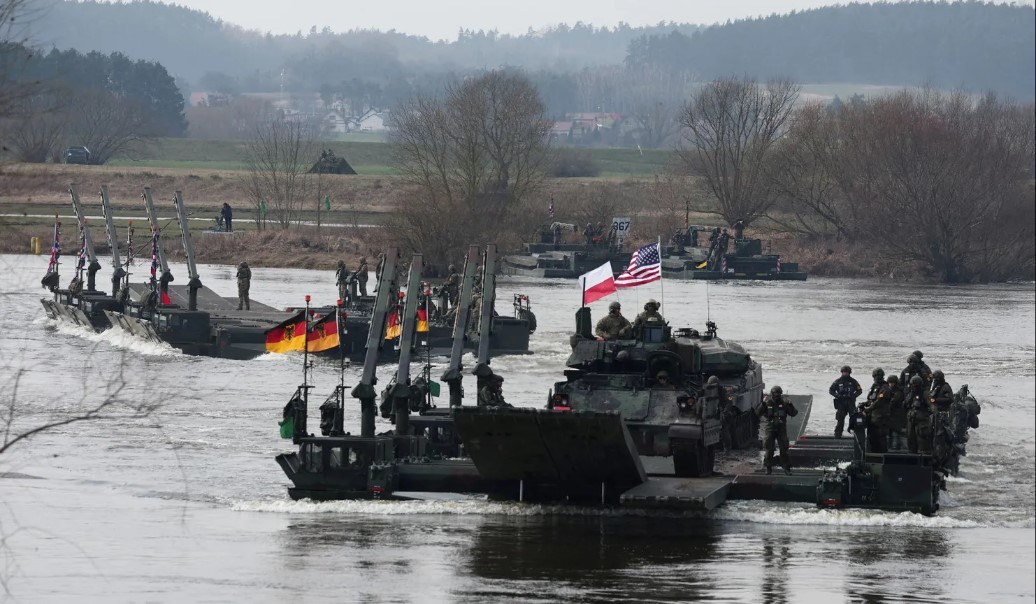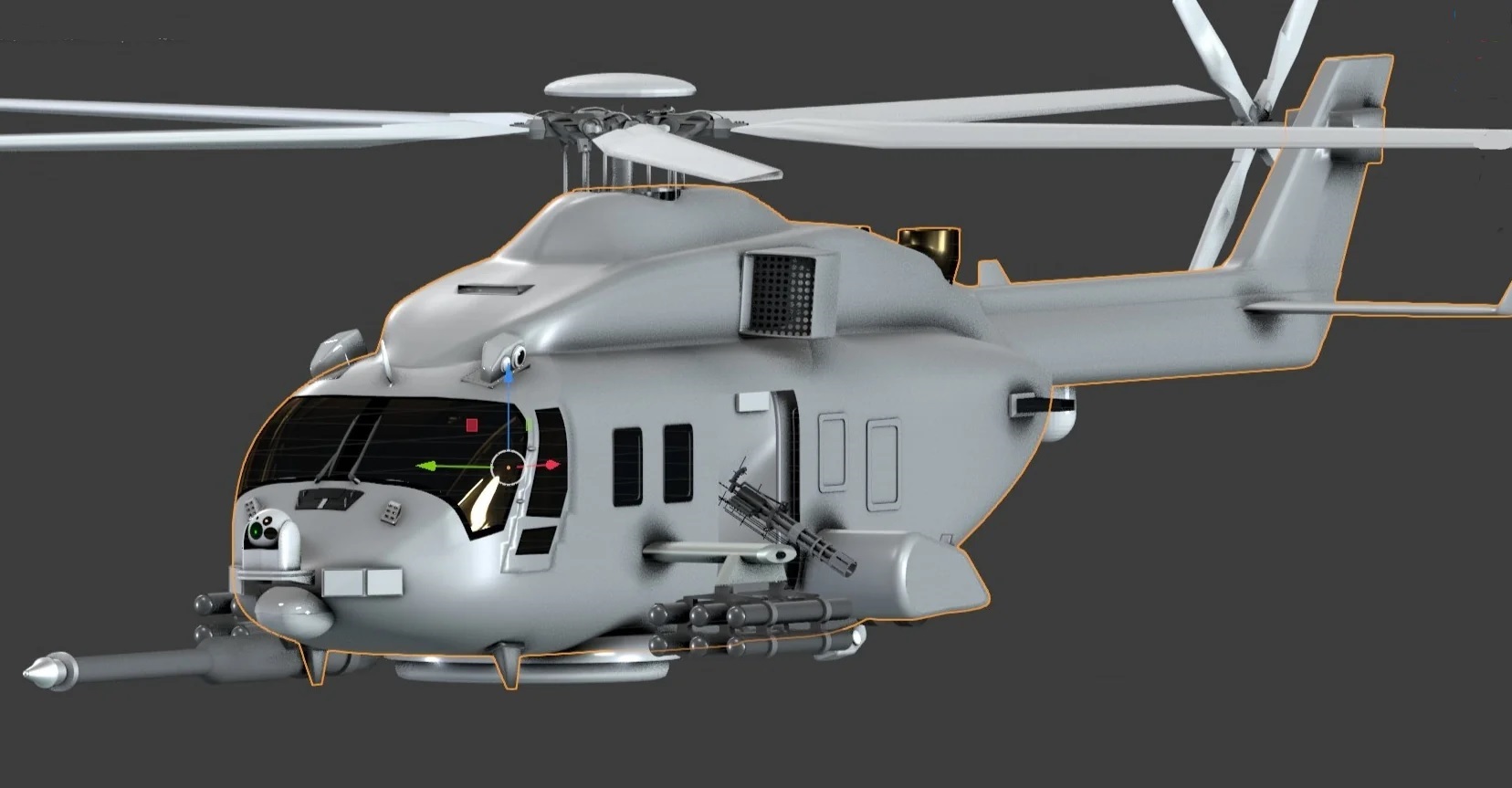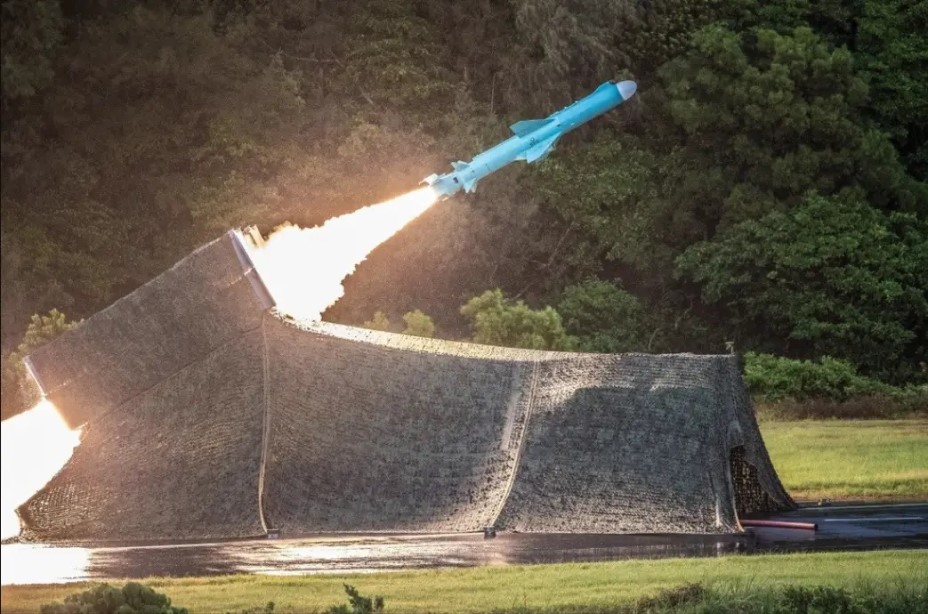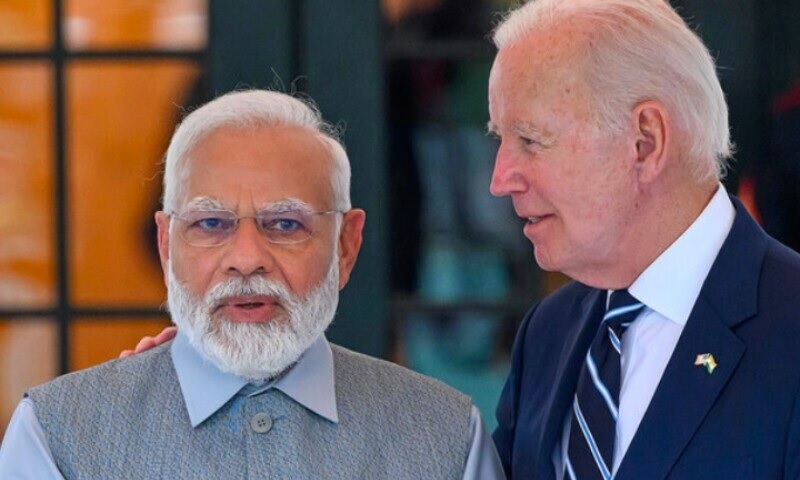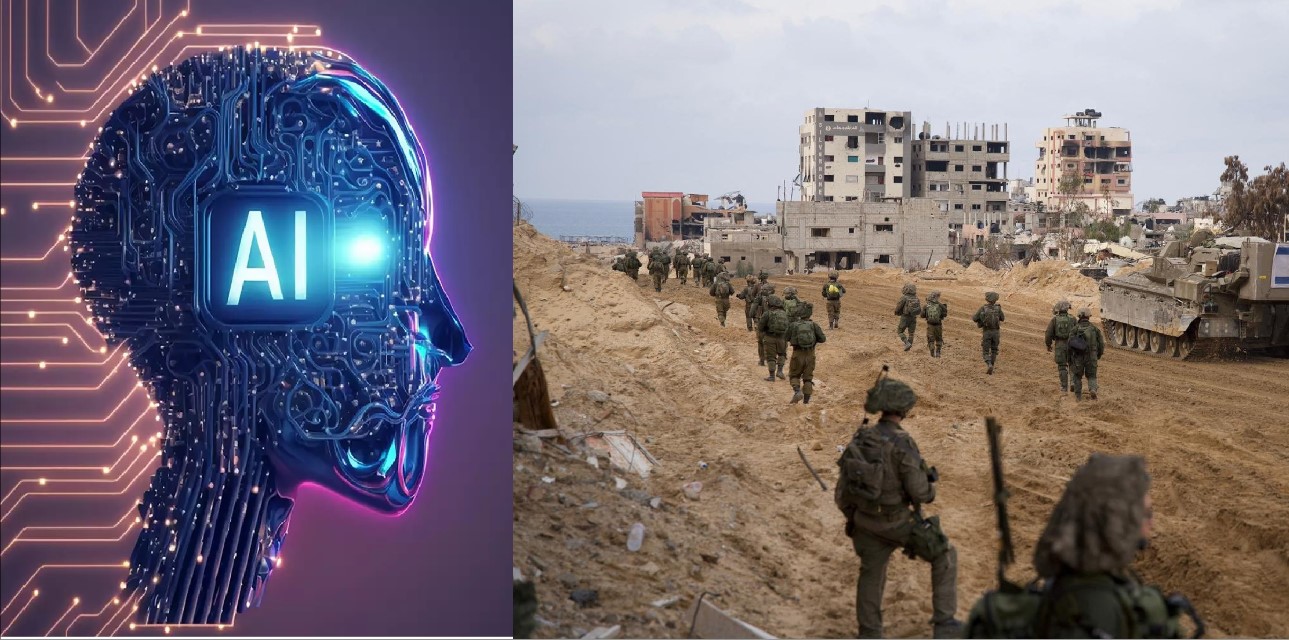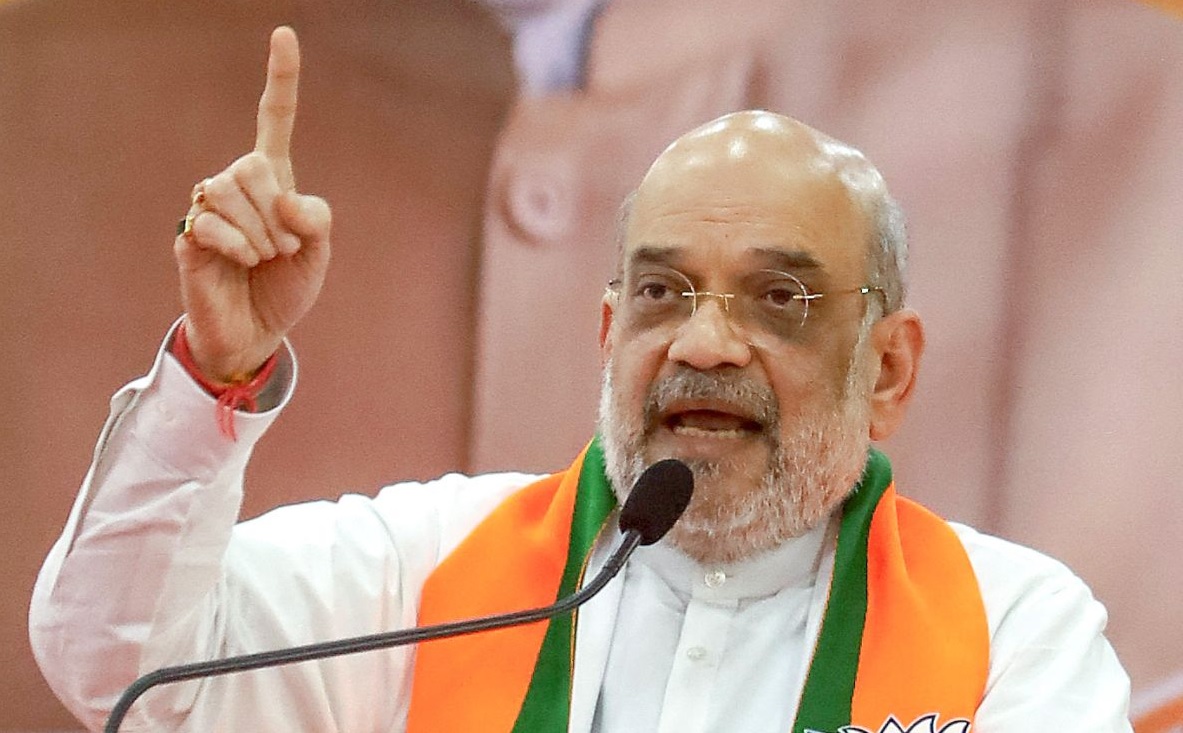Space & Technology
Latest Space NewsIndiaThe Indian Space Research Organisation (ISRO) is steadily advancing its space exploration efforts, with the Chandrayaan-4 mission currently in development. ISRO Chairman S Somanath emphasized the continuous nature of space research during his interaction with the media following his attendance at the twentieth anniversary of the Sat Paul Mittal School.Dr. Somanath reaffirmed ISRO's commitment to its lunar exploration mission, stating that the organization is on track to achieve significant progress. He highlighted Prime Minister Narendra Modi's directive to land on the moon by the early 2040s, indicating ISRO's ongoing dedication to exploration.In addition to lunar exploration, ISRO is actively involving students from across the country in various technology development projects. This engagement reflects ISRO's broader mission to foster interest and expertise in space-related endeavors among the youth.Last August marked a milestone for India's space program, with the successful touchdown of Chandrayaan-3 on the lunar south pole. This achievement underscores India's growing presence and capabilities in space exploration.Overall, ISRO's ongoing efforts underscore India's commitment to advancing space exploration and technology development, paving the way for future milestones and discoveries.
Read More → Posted on 2024-04-10 05:54:58World
Latest Defence NewsIndiaLithuania continues to provide vital military support to Ukraine, underscoring its commitment to Ukraine's sovereignty and security. On April 5, M577 armored personnel carriers were delivered to the Armed Forces of Ukraine, following a request for assistance. This ongoing aid reflects Lithuania's strategic objective of supporting Ukraine's defense efforts.Minister of National Defence Laurynas Kasčiūnas emphasized the importance of this assistance, stating, "The weaponry and equipment we and the Allies transfer is a critical factor in Ukraine’s fight for independence and for security of the whole Europe. We will assist Ukraine for as long as necessary."In addition to the recent delivery of armored personnel carriers, Lithuania responded promptly to Ukraine's request for 155mm ammunition in early March. Furthermore, Lithuania made a decision to contribute 35 million euros to the multinational Ammunition Initiative of the Czech Republic to aid in purchasing and delivering ammunition to Ukraine.The assistance provided by Lithuania encompasses a wide range of support, including weaponry, ammunition, UAVs, anti-drone equipment, training assistance, and repair of heavy equipment, among others. Lithuania has also approved a long-term plan for assistance to Ukraine, allocating a EUR 200 million package for new procurement for Ukraine from 2024 to 2026.Overall, since the beginning of the conflict, Lithuania has already provided approximately EUR 605 million worth of military assistance to Ukraine. This continued support underscores Lithuania's commitment to standing by Ukraine in its efforts to defend its sovereignty and security.
Read More → Posted on 2024-04-10 05:27:25World
Latest Defence NewsU.K ,IsraelRejecting accusations that Israel carried out a genocide in Gaza, US Secretary of Defence Lloyd Austin said there was no 'evidence' of it.On Tuesday, US Secretary of State Antony Blinken criticised the international community for failing to hold Hamas accountable, while US Defence Secretary Austin denied claims that Israel was committing genocide in Gaza, according to The Times of Israel.Both officials insisted that Israel must guarantee long-term improvements to the humanitarian situation in the enclave."We don't have any evidence of genocide being created," Austin said in testimony before the US Senate Armed Services Committee regarding US President Joe Biden's latest budget request, The Times of Israel reported.Austin's statement came a day after Democratic Senator Elizabeth Warren shared a video on her social media handle, asserting that the International Court of Justice should find Israel guilty of genocide because there was 'ample evidence'.Austin referred to the horrors carried out by Hamas on October 7 as a 'war crime' but refrained from calling them a genocide at the hearing on Tuesday.Austin made these remarks during a session that was often disrupted by far-left protesters yelling at him to cease supplying Israel with arms, The Times of Israel reported.They raised their hands, stained in red, in the air and yelled, "Stop the genocide."Several senators expressed their outrage at the civilian deaths and insisted that more was needed to be done by the administration to put pressure on Israel to save the Gaza population.Six months have elapsed since Hamas launched a brutal onslaught on Israel, resulting in widespread devastation and loss of life. Despite the passage of time, 134 hostages remain in Hamas' captivity, their fate hanging in the balance amidst ongoing efforts to secure their release.The Israel Defence Forces have withdrawn all ground troops from the southern Gaza Strip after a four-month fight in the Khan Younis area, The Times of Israel reported.As the country marked six months of war against Hamas, the Israel Defence Forces (IDF) published new data on its operations in the Gaza Strip, the West Bank and Lebanon, highlighting everything from the number of terror operatives killed to the number of sites struck.According to the data, more than 13,000 Hamas operatives and members of other terror groups have been killed by the IDF in the Gaza Strip since the beginning of the war, in addition to some 1,000 terrorists inside Israel on October 7, when gunmen rampaged through southern communities, massacring some 1,200 people, mostly civilians, and abducting 253 to Gaza.The data presented by the IDF further stated that the military has killed five Hamas brigade commanders and those of an equivalent rank, as well as more than 20 battalion commanders.Since October 7, in the West Bank, the IDF said the troops have arrested more than 3,700 Palestinians, including more than 1,600 affiliated with Hamas.
Read More → Posted on 2024-04-10 05:20:00World
Latest Defence NewsGermanyGermany is bolstering its naval prowess with the procurement of two additional F126 frigates from the Dutch shipbuilder Damen. These new vessels, also known as Saarland-class frigates, are part of Germany's strategy to update its navy and replace aging F123 Brandenburg-class frigates with more advanced surface warships.The F126 project, initiated in 2009, aims to create versatile and adaptable vessels capable of undertaking extended overseas missions. This reflects a shift in naval operations towards diverse mission profiles beyond traditional warfare, responding to the changing global landscape since the end of the Cold War.Damen Group, a renowned Dutch naval shipbuilder, secured the contract for the F126 project in January 2020 after a competitive bidding process involving major European firms. The contract, valued at 5.48 billion Euros, originally included the design and construction of four frigates with an option for two more.These frigates will integrate cutting-edge technology to enhance redundancy, survivability, and stealth capabilities. Equipped with advanced Anti-Air Warfare (AAW), Above Water Warfare System (AWWS), and Anti-Submarine Warfare (ASW) systems, they will be formidable assets in naval operations.Construction of the F126 frigates began in December 2023 at the Peene shipyard in Wolgast, Germany, marking the start of the building phase with a steel-cutting ceremony. The first frigate is scheduled to be delivered to the German Navy in 2028, marking a significant step in Germany's naval modernization efforts.
Read More → Posted on 2024-04-10 05:16:44India
Latest Defence NewsIndiaIndia, a land steeped in history, boasts one of the oldest and most enduring civilizations known to humanity. National Security Adviser Ajit Doval recently shed light on the remarkable characteristics that define the essence of Indian civilization during an event organized by the Vivekananda International Foundation in New Delhi.Addressing the gathering, NSA Doval underscored three fundamental aspects that encapsulate the essence of Indian civilization: antiquity, continuity, and vast expanse.Antiquity stands as the cornerstone of Indian civilization. With a history spanning millennia, India holds the distinction of being one of the oldest civilizations on Earth. Debate may arise regarding the origins of its people, but the antiquity of Indian society is a universally acknowledged fact, even by its detractors.Continuity emerges as another defining feature of Indian civilization. Unlike many other ancient civilizations that experienced abrupt declines or collapses, India's societal fabric has remained remarkably intact over the ages. Spanning over 4,000 to 5,000 years, the continuity of Indian civilization is a testament to the resilience and adaptability of its people.The vast expanse of Indian civilization is equally noteworthy. From the banks of the river Oxus to the shores of Southeast Asia, the footprint of Indian culture and heritage is evident across a sprawling geographical landscape. Contrary to the notion of a small isolated hamlet, Indian civilization flourished across diverse terrains, influencing and enriching societies far beyond its borders.NSA Doval also addressed the historical narrative surrounding Alexander the Great's expedition to India. While Western accounts often portray Alexander's conquest as a pivotal moment in world history, NSA Doval offered a different perspective. He highlighted that Alexander's incursion into India was not a transformative event in Indian history but rather a fleeting episode on the periphery of the Indian subcontinent.Alexander's foray into India halted at the banks of the Jhelum River, failing to penetrate deeper into the heart of the Indian subcontinent. Despite this, Western historical narratives often magnify Alexander's campaign, portraying it as a watershed moment in global history. However, NSA Doval challenged this portrayal, emphasizing that Alexander's incursion did not alter the course of Indian civilization in any significant manner.In essence, the grandeur attributed to Alexander's conquest belies the deeper and more enduring story of Indian civilization's continuity and resilience. While Western accounts may focus on Alexander's exploits, the true narrative of Indian civilization spans millennia, encompassing a rich tapestry of culture, tradition, and societal evolution.In conclusion, NSA Ajit Doval's reflections on Indian civilization offer a refreshing perspective that challenges conventional historical narratives. By highlighting the enduring characteristics of antiquity, continuity, and vast expanse, he invites us to delve deeper into the rich tapestry of India's cultural heritage. Beyond the fleeting episodes of conquest and colonization, Indian civilization stands as a testament to the resilience and enduring spirit of its people.
Read More → Posted on 2024-04-10 05:13:43World
Latest Defence NewsU.K ,IsraelThe British government has decided to continue sending weapons to Israel despite calls to suspend exports due to concerns over humanitarian violations in Gaza. Foreign Secretary David Cameron made the announcement during a visit to Washington, stating that after reviewing the situation, the UK's position on export licenses remains unchanged.Cameron emphasized that while they have grave concerns about humanitarian access in Gaza, they will not halt weapon exports to Israel. The United States, Israel's largest weapons provider, has also rejected calls to suspend shipments despite growing frustration with Prime Minister Benjamin Netanyahu's handling of the conflict.The decision comes amid criticism from various quarters, including over 600 British lawyers who warned that exporting weapons to Israel could breach international law. Britain's criteria for strategic licensing dictates that weapons should not be exported if there's a clear risk of them being used in violations of international humanitarian law.Since 2015, the UK has approved over 487 million pounds ($614 million) worth of weapon sales to Israel through single-issue licenses, with additional exports under open licenses. Germany, another major weapons exporter to Israel, is facing accusations of breaching the UN Genocide Convention in a case brought forward by Nicaragua in the International Court of Justice.Germany has defended its actions, stating that support for Israel is central to its foreign policy. Despite mounting concerns and legal challenges, both Britain and Germany remain steadfast in their support for Israel through arms exports.
Read More → Posted on 2024-04-10 05:06:43History
History News IndiaGwadar, a small coastal town nestled along the Makran coast of Pakistan's Balochistan province, has emerged as a focal point of regional and global geopolitics. Its transformation from a sleepy fishing village to a strategic port city reflects a complex tapestry of history, diplomacy, and missed opportunities. This comprehensive exploration aims to unravel the layers of Gwadar's past, examining its origins, the dynamics of its transfer between powers, and the far-reaching implications of decisions made by key actors on the international stage.Chapter 1: The Origins of GwadarGwadar's history dates back to ancient times, with evidence of human habitation found in the region dating back thousands of years. Early settlers, drawn to the fertile coastal plains and abundant marine resources, established thriving communities along the coastline. These early settlements laid the foundation for Gwadar's development as a hub of maritime trade and cultural exchange.The rise of Gwadar as a strategic outpost can be traced to its location along key maritime trade routes, connecting the Arabian Sea to the Persian Gulf and beyond. The town's natural harbor provided shelter for ships traversing the treacherous waters of the Arabian Sea, facilitating trade between the Indian subcontinent, the Middle East, and beyond.Chapter 2: Gwadar under Omani RuleIn the 18th century, Gwadar came under the rule of the Sultanate of Oman, marking the beginning of a new chapter in its history. The Khan of Kalat, Mir Noori Naseer Khan Baloch, gifted the town to the Sultan of Oman, Sultan bin Ahmad, in 1783. This transfer of ownership cemented Gwadar's position as a key strategic asset for the Omani empire, enabling it to expand its maritime influence in the region.Under Omani rule, Gwadar flourished as a center of maritime commerce and cultural exchange. The town's strategic location made it an ideal base for Omani naval expeditions and trade ventures, further enhancing its importance in the eyes of regional powers.Chapter 3: The Offer to India and Nehru's DecisionIn the mid-20th century, Gwadar emerged as a point of contention between regional powers, with the Sultanate of Oman offering to sell the town to India. Prime Minister Jawaharlal Nehru was faced with a momentous decision that would shape the course of South Asian geopolitics for decades to come.Nehru's decision to decline the offer, influenced by strategic considerations and logistical challenges, had far-reaching implications. While some viewed it as a missed opportunity, others saw it as a prudent move to avoid unnecessary conflict and maintain regional stability.Chapter 4: The Strategic Significance of GwadarGwadar's strategic importance has only grown in the modern era, with its transformation into a major port city and hub of international trade. Situated at the mouth of the Gulf of Oman, Gwadar serves as a gateway to the Arabian Sea and beyond, offering unparalleled access to energy resources and maritime trade routes.The development of Gwadar as a deepwater port and the integration of the China-Pakistan Economic Corridor (CPEC) have further enhanced its strategic significance. The port's proximity to key shipping lanes and its potential as a hub for transnational infrastructure projects have attracted significant investment from regional and global players.Chapter 5: Missed Opportunities and Unforeseen ConsequencesThe decision to decline the offer to acquire Gwadar continues to be a topic of debate among historians, policymakers, and scholars. While some argue that it was a missed opportunity to secure a valuable strategic asset, others contend that it was a prudent decision given the logistical challenges and geopolitical realities of the time.The consequences of Nehru's decision are difficult to quantify, but it undoubtedly had far-reaching implications for South Asian geopolitics. Gwadar's subsequent transfer to Pakistan and its integration into the CPEC have reshaped regional dynamics, altering the balance of power and influencing the strategic calculus of neighboring countries.Chapter 6: Balancing Act: Challenges and OpportunitiesNavigating the complexities of South Asian geopolitics requires a delicate balancing act between competing interests and strategic imperatives. The challenges and opportunities facing policymakers in the region are manifold, from managing territorial disputes to fostering economic cooperation and regional integration.Gwadar's emergence as a linchpin of regional connectivity presents both opportunities and challenges for the countries of South Asia and beyond. Balancing competing interests and leveraging Gwadar's potential as a catalyst for peace, prosperity, and stability will require creative thinking, diplomatic finesse, and strategic vision.Chapter 7: Looking Ahead: Lessons Learned and Paths ForwardAs Gwadar continues to evolve as a nexus of regional and global trade, it is essential to reflect on the lessons learned from its past and chart a course for the future. Drawing on historical precedents, strategic analysis, and forward-looking perspectives, policymakers, stakeholders, and scholars can work together to harness Gwadar's potential as a force for positive change in the region.Conclusion:Gwadar's journey from obscurity to prominence encapsulates the complexities of South Asian geopolitics and the enduring power of strategic decision-making. As we reflect on its storied past and contemplate its future trajectory, we are reminded of the importance of foresight, diplomacy, and cooperation in shaping the destiny of nations and the course of history. In the years to come, Gwadar will continue to serve as a beacon of hope and opportunity in an ever-changing world.
Read More → Posted on 2024-04-09 16:47:48India
Latest Defense News India ,MyanmarIndia has secured the rights to operate its second overseas port, Sittwe in Myanmar, following the Chabahar Port in Iran. The Ministry of External Affairs (MEA) has approved a proposal for India Ports Global (IPGL) to take over the operations of the entire port located on the Kaladan River. IPGL, a joint venture between Jawaharlal Nehru Port Trust (JNPT) and Deendayal Port Trust (Erstwhile Kandla Port Trust), was created and incorporated in January 2015 under the Companies Act, 2013, as per the directions of the Ministry of Shipping (MoS), with the aim of developing ports overseas.Presently, the Ministry of Shipping has assigned IPGL the task of equipping and operating container/multi-purpose terminals at Chabahar Port in Iran. The Sittwe Port is an integral part of the Kaladan multi-modal transit transport project, which seeks to connect the eastern Indian seaport of Kolkata with Sittwe seaport in Myanmar by sea. Additionally, it aims to link Sittwe Port to Paletwa in Myanmar via the Kaladan river waterway and further connect Paletwa to Zorinpui in Mizoram through a road component.This development holds immense significance as it offers an alternative route for shipping goods to the northeastern states of India. Moreover, it substantially reduces the cost and distance from Kolkata to Mizoram and beyond. Furthermore, it diminishes dependency on the Siliguri Corridor, commonly known as the chicken’s neck, which is squeezed between Bhutan and Bangladesh.The Sittwe Port, located in the Rakhine State of Myanmar, serves as a maritime gateway, enhancing trade and connectivity between India and Myanmar. Last year in May, Union Minister Sarbananda Sonowal and Myanmar's Deputy Prime Minister Admiral Tin Aung San jointly inaugurated the Sittwe Port and welcomed the first Indian cargo ship.IPGL, a company wholly owned by the Ministry of Ports, Shipping, and Waterways, is tasked with the responsibility of operating the Sittwe Port. With the approval from the MEA, IPGL is poised to take over the operations of the entire port situated on the Kaladan River.The Kaladan multi-modal transit transport project, of which Sittwe Port is a crucial component, aims to facilitate smoother connectivity and trade between India and Myanmar. This project has been developed under a framework agreement between India and Myanmar for the construction and operation of a multimodal transit transport facility on the Kaladan River.In summary, the acquisition of rights to operate Sittwe Port marks a significant milestone for India in bolstering its connectivity with Myanmar and enhancing trade relations in the region. It underscores India's commitment to developing strategic infrastructure projects that promote economic growth and regional cooperation.
Read More → Posted on 2024-04-09 16:13:43Space & Technology
Latest Technology News WorldImagine a fighter jet cloaked not in physical materials, but in a shimmering shield of ionized gas – plasma. This is the dream of plasma stealth technology, a revolutionary concept that aims to render aircraft invisible to radar.Traditionally, stealth aircraft rely on a combination of radar-absorbent materials and meticulously designed shapes to deflect or absorb radar waves. However, plasma stealth offers a different approach. By surrounding the aircraft in a cloud of plasma, the technology disrupts incoming radar signals, making the jet appear much smaller or even vanish from the radar screen entirely.The Science Behind the ShieldPlasma, often referred to as the fourth state of matter, consists of charged particles. When these particles interact with electromagnetic radiation like radar waves, they can absorb or scatter the energy, weakening the signal that bounces back to the radar receiver. In essence, the plasma cloud acts like a cloak, deflecting or absorbing the radar waves before they can reveal the aircraft's location and size.Challenges on the HorizonWhile the idea of plasma stealth is undeniably captivating, significant hurdles remain before it becomes a reality. Here are some of the key challenges:Maintaining the Plasma Field: Generating and sustaining a stable plasma field around a moving aircraft requires immense amounts of energy. Fighter jets would need lightweight and efficient power sources to keep the plasma shield operational during flight.Plasma Control: Managing the plasma field precisely is crucial. An uncontrolled discharge could damage the aircraft or interfere with its own electronic systems.Impact on Aerodynamics: The presence of a plasma field might disrupt the airflow around the aircraft, potentially affecting its performance and maneuverability.The Race for Radar InvisibilityDespite the challenges, the potential benefits of plasma stealth are undeniable. Several countries, including China and the United States, are reportedly conducting research and development in this field. The Future of FlightWhile plasma stealth technology is still in its early stages, it represents a fascinating glimpse into the future of aerial warfare. If the technical hurdles can be overcome, plasma stealth could revolutionize fighter jet design, giving them an unprecedented advantage in the skies. The coming years will be crucial in determining whether this futuristic concept takes flight. Countries With Plasma Stealth Technology No country has yet confirmed using plasma stealth technology for its fighter jets. While research is ongoing, particularly in China and the United States, developing a functional and efficient system presents significant challenges. These challenges include maintaining a stable plasma field around a moving aircraft, precisely controlling the plasma to avoid damaging the aircraft itself, and mitigating the impact on the jet's aerodynamics.
Read More → Posted on 2024-04-09 16:06:45World
Latest Defense News Russia ,UkraineRussia said Ukraine struck the Zaporizhzhia nuclear power station controlled by Russian forces three times on Sunday and demanded the West respond, though Kyiv said it had nothing to do with the attacks.The International Atomic Energy Agency (IAEA) has long warned of the risks of a disaster at Zaporizhzhia, Europe's largest nuclear plant, and urged an end to fighting in the area.The plant is just 500 km (300 miles) from the site of the world's worst nuclear accident, the 1986 Chornobyl disaster.What nuclear material is at the Zaporizhzhia plant, what are the risks and why are Russia and Ukraine fighting over it?What is it and What was its Capacity ?The Zaporizhzhia nuclear power plant has six Soviet-designed VVER-1000 V-320 water-cooled and water-moderated reactors containing Uranium 235. They were all built in the 1980s, though the sixth only came online in the mid-1990s after the collapse of the Soviet Union.All but one of the reactors are in cold shutdown. Reactor unit 4 is in "hot shutdown", mainly for heating purposes.IAEA Director General Rafael Grossi says that fighting a war around a nuclear plant has put nuclear safety and security in "constant jeopardy".What Happened on April 7 ?Russia's state nuclear corporation, Rosatom, said Ukraine attacked the plant three times on Sunday with drones, first injuring three near a canteen, then attacking a cargo area and then the dome above reactor No. 6.IAEA experts at the site went to the three locations of the attacks and confirmed there had been an attack."Russian troops engaged what appeared to be an approaching drone," the IAEA said. "This was followed by an explosion near the reactor building.""While the team so far has not observed any structural damage to systems, structures, and components important to nuclear safety or security of the plant, they reported observing minor superficial scorching to the top of the reactor dome roof of Unit 6 and scoring of a concrete slab supporting the primary make-up water storage tanks," the IAEA said.The IAEA did not say directly who was to blame for the attacks.A Ukrainian intelligence official said Kyiv had nothing to do with any strikes on the station and suggested they were the work of Russians themselves.What are the Risk ?Russian forces took control of the plant in early March 2022, weeks after invading Ukraine. Special Russian military units guard the facility and a unit of Russia's state nuclear company, Rosatom, runs the plant.Nuclear reactors' containment structures like Zaporizhzhia's are made of steel-lined reinforced concrete designed to withstand the impact of a small plane crash so there is little immediate risk from a minor attack on those structures.A 1989 study by the U.S. Department of Energy found that the model of containment structure used in Zaporizhzia "exhibits vulnerabilities to the effects of an aircraft crash" and a fighter jet crashing downwards into the dome, where the structure is thinner, could penetrate it, causing concrete chunks and aircraft engine parts to fall inside.External power lines essential to cooling nuclear fuel in the reactors are a softer potential target. Cooling fuel even in reactors in cold shutdown is necessary to prevent a nuclear meltdown.Since the war began the plant has lost all external power eight times, most recently in December last year, forcing it to rely on emergency diesel generators for power. Water is also needed to cool fuel.Pressurised water is used to transfer heat away from the reactors even when they are shut down, and pumped water is also used to cool down removed spent nuclear fuel from the reactors.Without enough water, or power to pump the water, the fuel could melt down and the zirconium cladding could release hydrogen, which can explode.What About the Spent Fuel ?Besides the reactors, there is also a dry spent fuel storage facility at the site for used nuclear fuel assemblies, and spent fuel pools at each reactor site that are used to cool down the used nuclear fuel.Without water supply to the pools, the water evaporates and the temperatures increase, risking a fire that could release a number of radioactive isotopes.An emission of hydrogen from a spent fuel pool caused an explosion at reactor 4 in Japan's Fukushima nuclear disaster in 2011.What Happens in a Meltdown ?A meltdown of the fuel could trigger a fire or explosion that could release a plume of radionuclides into the air which could then spread over a large area.The Chornobyl accident spread Iodine-131, Caesium-134, Strontium-90 and Caesium-137 across parts of northern Ukraine, Belarus, Russia, northern and central Europe.Nearly 8.4 million people in Belarus, Russia and Ukraine were exposed to radiation, according to the United Nations. Around 50 deaths are directly attributed to the disaster itself.But 600,000 "liquidators", involved in fire-fighting and clean-up operations, were exposed to high doses of radiation. Hundreds of thousands were resettled.There is mounting evidence that the health impact of the Chornobyl disaster was much more serious than initially presented at the time and in the years following the accident.Incidence of thyroid cancer in children across swathes of Belarus, Russia and Ukraine increased after the accident. There was a much higher incidence of endocrine disorders, anaemia and respiratory diseases among children in contaminated areas.
Read More → Posted on 2024-04-09 15:39:24World
Latest Defense News U.SLockheed Martin has been chosen to develop an advanced micro-electronics package for integration into the US Navy’s MH-60R Seahawk helicopters. This move is part of the Stimulating Transition for Advanced Microelectronics Packaging (STAMP) program, aimed at enhancing the capabilities of the helicopters in detecting and identifying threats more swiftly and accurately.The micro-electronics suite, designed to be compact in size, weight, power, and cost, will create additional space within the helicopters for other necessary equipment to support various missions. According to company vice president Deon Viergutz, such technology is crucial in the modern battlespace to ensure the safety of service members by effectively managing the electromagnetic spectrum and staying ahead of threats.Initially intended for Sikorsky helicopters, the US Navy plans to incorporate this suite into other platforms across air, land, and sea domains.Lockheed's micro-electronics suite will leverage Altera’s Multi-Chip Package, providing advanced digital and analog capabilities. This package is expected to deliver higher bandwidth and performance while maintaining low latency, power consumption, and a smaller footprint.Viergutz expressed enthusiasm about collaborating with Intel, Altera, and the Office of the Under Secretary of Defense for Research and Engineering (OUSD) to enhance defense systems capabilities using high-performance US-built semiconductors.Over the next 18 months, work on the program will be carried out at Lockheed’s facility in Owego, New York.
Read More → Posted on 2024-04-09 15:32:14World
Latest Defense News PolandNATO's rapid-response force, known as the Very High Readiness Joint Task Force (VJTF), has been deployed to Poland as part of Exercise Steadfast Defender 2024, NATO's largest exercise in decades.Led by the United Kingdom, the VJTF comprises military personnel from nine NATO Allies, including Albania, Hungary, Latvia, North Macedonia, Poland, Romania, Spain, and Turkey. These troops participated in Exercise Brilliant Jump 2024, practicing rapid deployment to Poland's training grounds within a few days. Once there, they joined Exercise Dragon 2024, led by Poland, which simulated repelling an invasion.These exercises are integral to Steadfast Defender 2024, which involves 90,000 forces from all 32 NATO Allies. The exercise aims to test NATO's new regional defense plans, focusing on rapid deployment and combat readiness in both Norway and Poland. Steadfast Defender 2024 is scheduled to run from January to May 2024.
Read More → Posted on 2024-04-09 15:28:09India
Latest Defense News IndiaHindustan Aeronautics Limited (HAL) is set to revolutionize indigenous helicopter production with the Indian Multi-Role Helicopter (IMRH). This medium-lift helicopter, designed for versatility and firepower, promises to bolster the capabilities of the Indian Armed Forces across various missions.The IMRH, with its modular design, offers flexibility unparalleled in its class. It can seamlessly transition between roles, serving as a platform for air assault, air attack, troop transport, search and rescue operations, and VIP transportation. This adaptability ensures that the IMRH remains a valuable asset in diverse battlefield scenarios.Crucially, the IMRH represents a significant stride towards India's self-reliance in defense manufacturing. Developed under the Defence Acquisition Procedure (DAP) 2020, the project underscores the collaboration between HAL and the private sector, fostering innovation and strengthening the domestic defense ecosystem.Recent computer-generated images have shed light on the IMRH's potential as a combat helicopter. The depiction of the helicopter configured with external hardpoints capable of carrying up to 1,500 kg of weaponry underscores its firepower. This optional armed configuration positions the IMRH as a formidable force multiplier, equipped to handle a range of threats.The IMRH's firepower potential is further highlighted by its ability to accommodate various armaments, including anti-tank guided missiles (ATGMs),equipped with pods for launching 57mm and 80mm unguided rockets, and a nose-mounted 20mm cannon. With at least three attachment hardpoints on each side, the IMRH offers versatility in weapon selection, catering to the evolving needs of modern warfare.In addition to its combat capabilities, the IMRH remains true to its role as a multi-role helicopter. Its capacity for troop transport, cargo delivery, search and rescue operations, and VIP transportation underscores its utility across a spectrum of missions.The ongoing development of the IMRH underscores India's commitment to bolstering its defense capabilities through indigenous manufacturing. As the helicopter progresses towards operational deployment, it is poised to replace aging fleets and provide a much-needed indigenous alternative.The IMRH's emergence signals a new era for India's aerial defense capabilities. Its adaptability, firepower, and emphasis on domestic manufacturing underscore its significance in safeguarding India's airspace and fulfilling the evolving requirements of the Indian Armed Forces.In conclusion, the Indian Multi-Role Helicopter (IMRH) represents a formidable addition to India's defense arsenal. Designed for versatility and equipped with potent firepower, the IMRH embodies India's quest for self-reliance in defense manufacturing. As it nears operational readiness, the IMRH stands poised to redefine India's aerial defense capabilities and contribute significantly to the nation's security architecture.
Read More → Posted on 2024-04-09 15:23:48World
Latest Defense News U.S ,ChinaChina's actions in the South China Sea were an example of it trying to gain territorial space through force, and were destabilising the region, a senior U.S. admiral said on Tuesday.The Philippines and China have had a series of maritime run-ins, including water cannon use, and heated verbal exchanges that have triggered concern about an escalation at sea.Admiral John Aquilino, Commander of the U.S. Indo-Pacific Command, said in an address to the Lowy Institute think tank in Sydney that China's actions against the Philippines, particularly in Second Thomas Shoal, were "dangerous, illegal and they are destabilising the region".Aquilino said he was "very concerned about what is happening at Second Thomas Shoal", where the physical action of the Chinese coast guard and a fishing vessel had resulted in six sailors injured."So what's next and how far are they willing to go in that area?"He said similar actions by China were also being seen elsewhere in the region, including in Japan and Malaysia."This is not isolated, this is about the PRC (People's Republic of China) trying to gain territorial space unilaterally through force," he said.China claims almost the entire South China Sea as its territory, policed by an armada of coastguard vessels, some more than 1,000 km (620 miles) from its mainland, and has maintained its responses have been appropriate in the face of Philippine encroachment.Aquilino said there was positive movement in the U.S-China relationship since the leaders of the two countries had spoken, with no concerning maritime interactions between the U.S. and China since then.Aquilino said he was concerned this detente was temporary, as China sought to stabilise its economy.He also expressed concern about what he said was synchronisation between Russia and China, and Russia and North Korea."Those sets of cooperation and the linkages are really a new world and a concern," he said.In the Pacific Islands, he said China was exercising economic coercion, and said Australia and the U.S. were working together to focus on increasing development assistance to the region, including the Solomon Islands which has struck a security pact with China."An increased military presence in that region is a direct threat to Australia as it applies to homeland defence and it doesn't put the U.S. in a good position either," he said.
Read More → Posted on 2024-04-09 15:11:29World
Latest Defense News TaiwanTaiwan is planning to deploy a land-attack cruise missile capable of striking China later this year. The missile in question is the Hsiung Sheng, with a range of 1,200 kilometers (745 miles). It's reported that 100 of these missiles are under consideration for deployment.The Hsiung Sheng missile, an extended-range version of the Hsiung Feng-IIE, has been in production since 2022 and underwent its first test last year. It's developed by the National Chung-Shan Institute of Science and Technology.According to reports, the missile has the capability to strike Chinese military bases, including those in the eastern and western theater command areas. It's equipped with high-explosive and fragmentation warheads, making it effective against targets such as command posts, bunkers, and airport runways.The procurement of these missiles is part of Taiwan's Ministry of National Defense's special budget totaling 484 billion New Taiwan dollars ($15.05 billion) for the acquisition of advanced weaponry from 2022 to 2026. Specifically, around 16.9 billion New Taiwan dollars ($534.93 million) from this budget has been allocated for the procurement of 131 Hsiung Sheng missiles by 2025.
Read More → Posted on 2024-04-09 15:08:28India
Latest Defense News U.S ,India ,PakistanThe United States has refrained from taking sides in the ongoing tensions between Pakistan and India, urging both nations to exercise restraint and resolve their differences through dialogue. This response comes after Pakistan accused India of involvement in the killings of individuals associated with terrorism and extremism on Pakistani soil, as reported by UK media outlet 'The Guardian.'In a press briefing, US Department of State spokesperson Matthew Miller stated, "We have been following the media reports about this issue. We don't have any comment on the underlying allegations, but of course, while we're not going to get in the middle of this situation, we encourage both sides to avoid escalation and find a resolution through dialogue."Earlier in January, similar attempts by Pakistan to link India with the deaths of two Pakistani nationals were dismissed by India's Ministry of External Affairs. Official spokesperson Randhir Jaiswal denounced these allegations as "peddling false and malicious anti-India propaganda."Jaiswal emphasized that Pakistan's accusations were baseless and reiterated India's stance against terrorism. He highlighted Pakistan's history as a breeding ground for terrorism and illegal activities, cautioning that Pakistan would face the consequences of its actions.The recent tensions stem from claims made by Pakistan's Foreign Secretary Muhammad Syrus Sajjad Qazi, who alleged "credible evidence" of Indian agents' involvement in the assassinations of Shahid Latif and Muhammad Riaz in Sialkot and Rawalkot respectively. Latif, designated as a terrorist in India, was killed in a mosque in Sialkot, while Riaz, formerly associated with the terrorist organization Jamaatud Dawa, was slain in Rawalkot.In response to Pakistan's accusations, India's External Affairs Minister S Jaishankar emphasized that victims of terrorism do not collaborate with perpetrators. He criticized Pakistan's Foreign Minister Bilawal Bhutto Zardari's remarks on "weaponizing terrorism," asserting that India stands against terrorism and will continue to defend itself.The ongoing tensions between Pakistan and India highlight the complex relationship between the two neighboring nations and the challenges in maintaining regional stability. The call for dialogue and restraint from the United States underscores the importance of peaceful resolution and de-escalation in the region.
Read More → Posted on 2024-04-09 15:05:19World
Latest Defense News IsraelThe Israeli military's operations in Gaza, employing artificial intelligence (AI) systems to target Hamas militants, have come under increasing scrutiny as civilian casualties continue to rise. Reports by Israeli outlets +972 Magazine and Local Call have shed light on the use of two AI systems, "Lavender" and "Where's Daddy?", in the conflict, raising questions about the accuracy of target identification and the ethical implications of AI use in warfare.This AI powered database, previously undisclosed, is said to have identified as many as 37,000 potential targets at one stage, at the heights of the conflict.AI Systems' Role in Targeting Hamas MilitantsThe "Lavender" system is designed to identify individuals suspected of being part of Hamas and Palestinian Islamic Jihad (PIJ), even targeting those with lower ranks for potential aerial bombardments. In the initial stages of the conflict, the military heavily relied on Lavender, leading to the system labeling up to 37,000 Palestinians as militants, along with their residences, for potential airstrikes. However, the system's 10% error rate has resulted in the misidentification of individuals with no links to militant groups.According to one intelligence officer, "The IDF bombed [Hamas operatives] in homes without hesitation, as a first option. It's much easier to bomb a family's home. The system is built to look for them in these situations." This approach has often resulted in civilian casualties, acknowledged as "collateral damage", said a TOI report.How Do These AI Systems Work?The Israeli military's AI systems, including "Lavender" and "The Gospel", function by identifying suspected militants and their residences in Gaza. "Lavender" focuses on individuals, designating them for potential elimination, while "The Gospel" identifies buildings and facilities purportedly used by militants. "Where's Daddy?" then monitors these targets and alerts the military upon their return to their family residences, facilitating strikes when they are present. This approach, however, has led to civilian casualties and raised concerns about the accuracy and ethical implications of AI use in warfare.Lavender was developed by the Israel Defense Forces’ elite intelligence division, Unit 8200, which is comparable to the US’s National Security Agency or GCHQ in the UK.Impact on Civilian Casualties and Targeting CriteriaThe use of AI systems like Lavender has raised concerns about civilian casualties, acknowledged as "collateral damage" by the military. Officers admitted to bombing Hamas operatives in homes without hesitation, as it was seen as an easier option. The minimal human oversight in the target identification process has reduced human involvement to a mere "rubber stamp" of the AI's selections, leading to questions about the criteria used for targeting and the AI's error rates.International Reaction and Israeli Military's WithdrawalDespite international concerns, including from the United States, Israel has announced its withdrawal from Khan Younis, a city in southern Gaza, signaling the completion of a crucial stage in its ground operation against Hamas militants. However, defense officials have indicated that troops are regrouping in preparation for an advance into Rafah, Hamas' final stronghold, raising further concerns about civilian safety.Legal and Moral Questions Surrounding AI UseIsrael's use of AI systems in its war on Hamas has raised legal and moral questions, particularly regarding the acceptance of collateral damage and the pre-authorization of civilian casualties. The IDF has defended its operations, stating that they are carried out in accordance with the rules of proportionality under international law. However, experts in international humanitarian law have expressed alarm at the high collateral damage ratios permitted for lower-ranking militants.Israeli Military's Ground Operations in GazaThe Israeli military has announced its withdrawal from Khan Younis, a city in southern Gaza, signaling the completion of a crucial stage in its ground operation against Hamas militants. This move has reduced the Israeli troop presence in the area to one of the lowest levels since the six-month conflict began.However, defense officials stated that the troops were regrouping in preparation for an advance into Rafah, Hamas' final stronghold. Despite international concern, including from the United States, Israel's closest ally, which has insisted on seeing a viable plan to ensure civilian safety, Israel has been threatening a ground offensive in Rafah for weeks. The city is home to approximately 1.4 million people, more than half of Gaza's total population.The withdrawal marks a significant point in the ongoing conflict between Israel and Hamas, which has now reached the six-month mark. Despite the withdrawal, Israeli military officials emphasized that a "significant force" remained in Gaza to continue targeted operations, including in Khan Younis, the hometown of Hamas leader Yehya Sinwar.The Israeli military's use of AI in targeting Hamas militants in Gaza has sparked debates about the ethics and legality of such operations, particularly in terms of civilian casualties. The reliance on AI systems like Lavender, with minimal human oversight, has raised concerns about the accuracy of target identification and the potential for increased civilian harm. As the conflict in Gaza continues, the role of AI in modern warfare and its impact on civilian populations remain subjects of intense scrutiny and debate.
Read More → Posted on 2024-04-09 14:56:30India
Latest Defense News IndiaIn a recent address at an election rally in Lakhimpur, Home Minister Amit Shah made assertions regarding the Modi government's stance on national security and development initiatives, particularly in the Northeast region of India. Shah emphasized that under the leadership of Prime Minister Narendra Modi, China has been deterred from encroaching upon Indian territory, contrasting this with what he portrayed as Nehru's inadequate response during the 1962 Chinese aggression.Shah highlighted the government's efforts in securing the country's borders, particularly with Bangladesh, and curbing infiltration. He credited the BJP-led government for bringing about a significant change in border security policies, asserting that infiltration has been effectively halted.Furthermore, Shah criticized the previous Congress government in Assam, alleging that it failed to address the state's issues adequately, leading to violence and insurgency-related incidents. He contrasted this with the peace accords signed under the Modi government, which resulted in the surrender of 9000 youths and the withdrawal of the Armed Forces (Special Powers) Act from 80% of Assam's areas.Shah also praised the swift implementation of the Bodo Accord, highlighting it as an example of the government's commitment to fulfilling its promises. He criticized the Congress manifesto, claiming that it favored Muslim personal law, while highlighting the BJP's initiatives such as the prevention of child marriages in Assam and the proposed Uniform Civil Code in Uttarakhand.Moreover, Shah stressed the importance of the Northeast's development in the overall growth of the nation, urging voters to support NDA candidates in the region. He presented the upcoming election as a choice between the BJP-led government's vision for development and what he portrayed as the alternative represented by Rahul Gandhi and the INDI Alliance.In conclusion, Amit Shah's address underscored the Modi government's achievements in national security, border management, and development initiatives in the Northeast. He called upon voters to endorse the BJP-led government for a third term, emphasizing the party's commitment to delivering on its promises and ensuring the continued progress of the nation.
Read More → Posted on 2024-04-09 14:50:28World
Latest Defense News Sweden ,UKSaab, a Swedish defense company, has secured a new contract with the UK Ministry of Defence (MoD) valued at GBP 60 million. The initial three-year agreement includes options for extension until 2030. This contract is for the provision of support to Live Simulation systems with ILT-D (Instrumented Live Training), replacing the previous DFWES (Direct Fire Weapon Effect Simulator) contract.The ILT-D system supports high-fidelity training simulations using a combination of laser and geometric pairing technology to simulate both direct and indirect fire effects. This technology provides detailed data for objective feedback, aiding in the After Action Review (AAR) process and validating training.The contract involves a significant investment to update and extend the life of the capability, ensuring it remains relevant to the evolving training needs of the British Army. This includes addressing obsolescence issues and ensuring interoperability with partner nations through the latest Saab hardware and software.Support under the contract will be provided at various training locations, including Collective Training sites in the UK and Germany, as well as specific training centers such as the Infantry Training Centre in Catterick, Infantry Battle School in Brecon, and the Commando Training Centre Royal Marines.James Passmore, VP Director of Marketing and Sales at Saab UK, emphasized the company's commitment to delivering top-notch live simulation capabilities to support the UK's training requirements. Simon Pearce, Training and Simulation Systems Portfolio Leader for Defence Equipment & Support, highlighted the importance of ILT-D in preparing the British Army for the challenges of modern warfare.Saab's Live Simulation Systems are designed with interoperability and deployability in mind, with a growing global user community. The British Army has already deployed these systems in various overseas exercises, demonstrating their effectiveness in diverse training environments.
Read More → Posted on 2024-04-09 14:42:13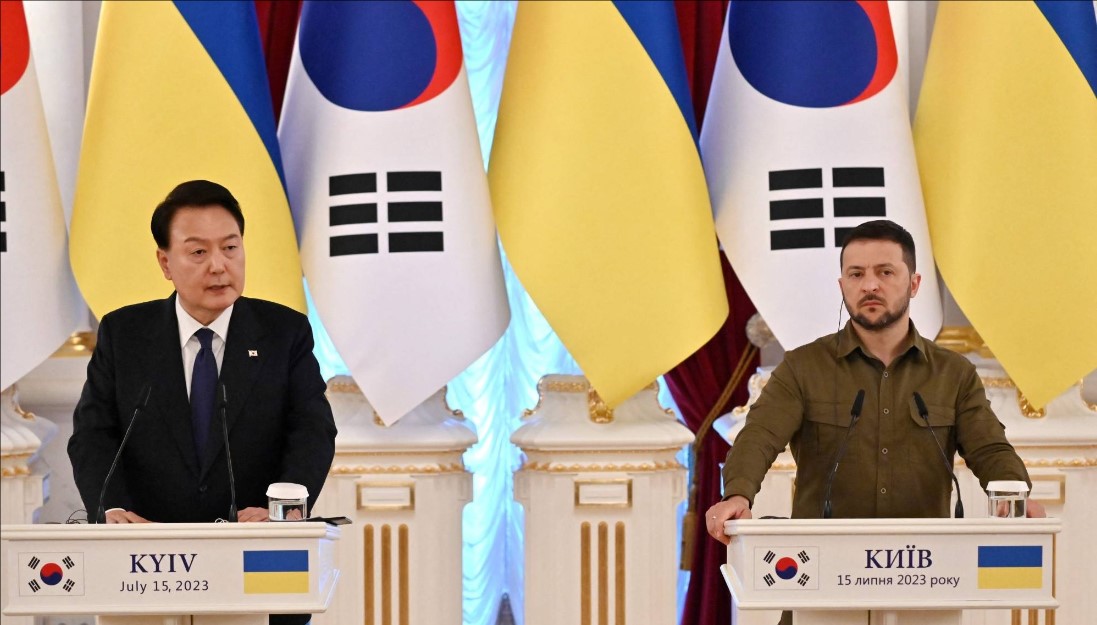
South Korea Allocates $12 Million Aid for Wounded Ukrainian Soldiers Amid Regional Security Concerns
World
Latest Defense News South Korea ,UkraineSouth Korea has announced a $12-million aid package for the rehabilitation of wounded Ukrainian soldiers. The disclosure was made during a meeting with NATO Indo-Pacific partner countries in Brussels. This contribution is part of Seoul's larger $2.3-billion aid commitment from 2024 onwards.The announcement was attended by ministry heads from Australia, Japan, and New Zealand. South Korean Foreign Minister Cho Tae-Yul stated that the aid package will be channeled through NATO's Comprehensive Assistance Package Trust Fund for Ukraine, which was established in 2016 to support the country in rebuilding its security and defense sector.This move comes in response to criticism from Russia regarding South Korea's disclosure of non-lethal and humanitarian aid to Kyiv in 2023.Additionally, the meeting addressed the regional implications of North Korea's support for Russia in the ongoing war. Minister Cho expressed concerns about Pyongyang's decision to arm Moscow, citing potential security threats to the Korean Peninsula and the broader Indo-Pacific region.South Korea recently reported that North Korea might be using Ukraine as a testing ground for its weapons by allowing Russia to deploy them in combat. Reports suggest that North Korea has sent 7,000 containers of arms, including artillery shells, self-propelled rockets, and ballistic missiles, to Russia.Minister Cho also highlighted concerns about Russia's transfer of refined oil to North Korea, which could undermine the global nonproliferation regime aimed at preventing the spread of nuclear weapons.
Read More → Posted on 2024-04-09 14:38:31Search
Top Trending
-
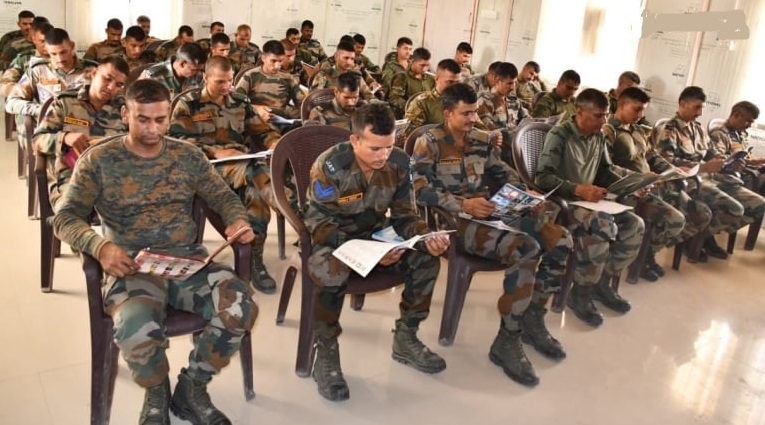 Agneepath Scheme replaced with Sainik Samman Scheme 2024, Defence Minister Rajnath Singh Relaunched Agniveer Scheme
Agneepath Scheme replaced with Sainik Samman Scheme 2024, Defence Minister Rajnath Singh Relaunched Agniveer Scheme
-
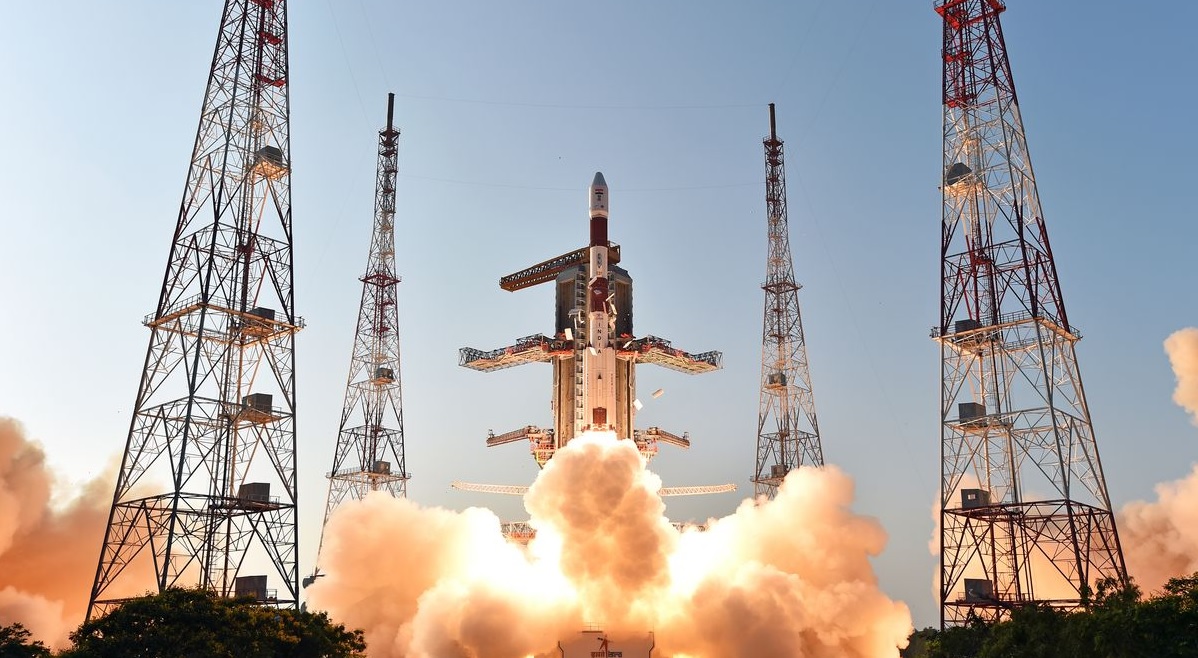 Isro Draws up Ambitious Plan for 2024, says will Launch at Least 12 Missions
Isro Draws up Ambitious Plan for 2024, says will Launch at Least 12 Missions
-
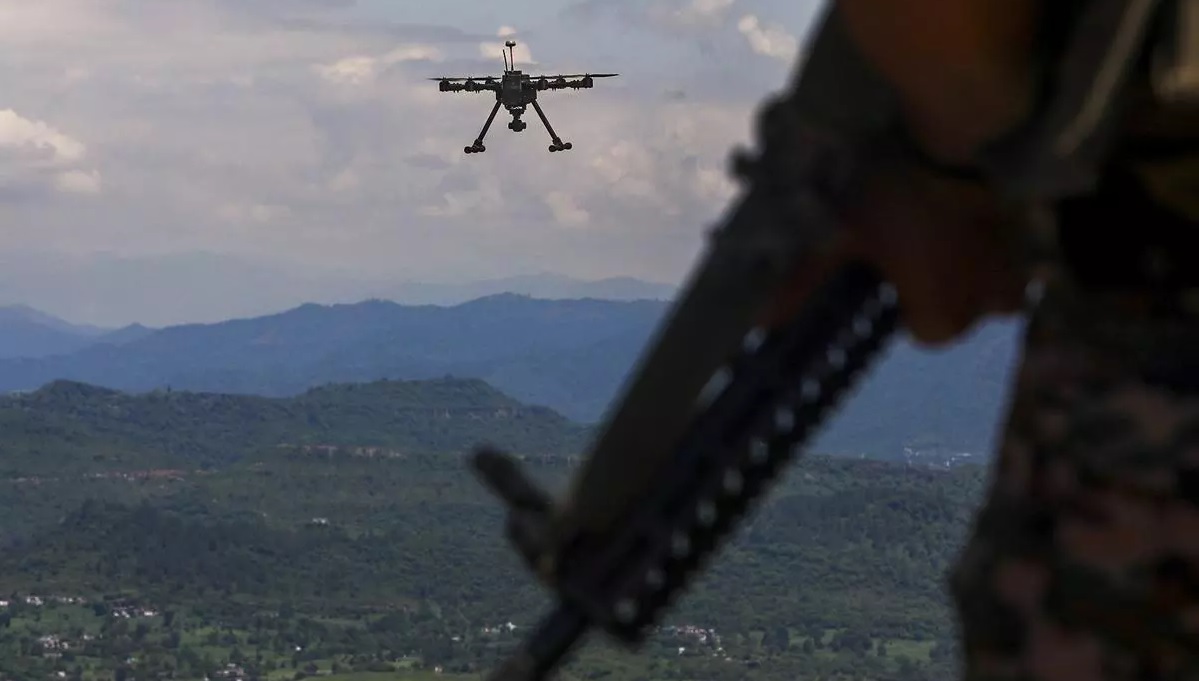 India's Defence Ministry Warns Against Chinese Parts in Military Drones Amid Security Concerns
India's Defence Ministry Warns Against Chinese Parts in Military Drones Amid Security Concerns
-
 China’s Super Radar Detects Mysterious Plasma Bubble Over Giza Pyramids
China’s Super Radar Detects Mysterious Plasma Bubble Over Giza Pyramids
-
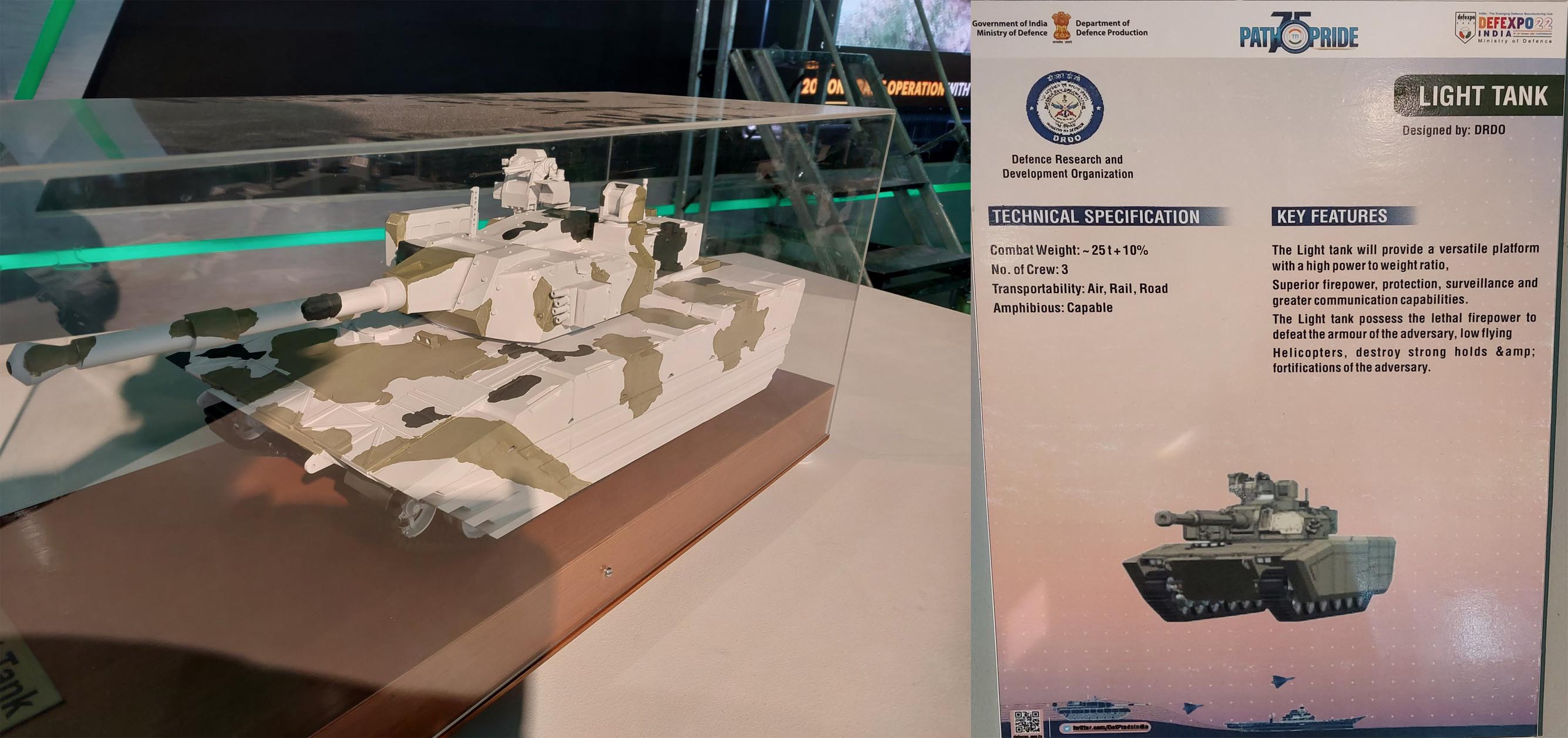 German Engines Available Now But India Chooses American Power Plants for Entire Zorawar Light Tank Project
German Engines Available Now But India Chooses American Power Plants for Entire Zorawar Light Tank Project
-
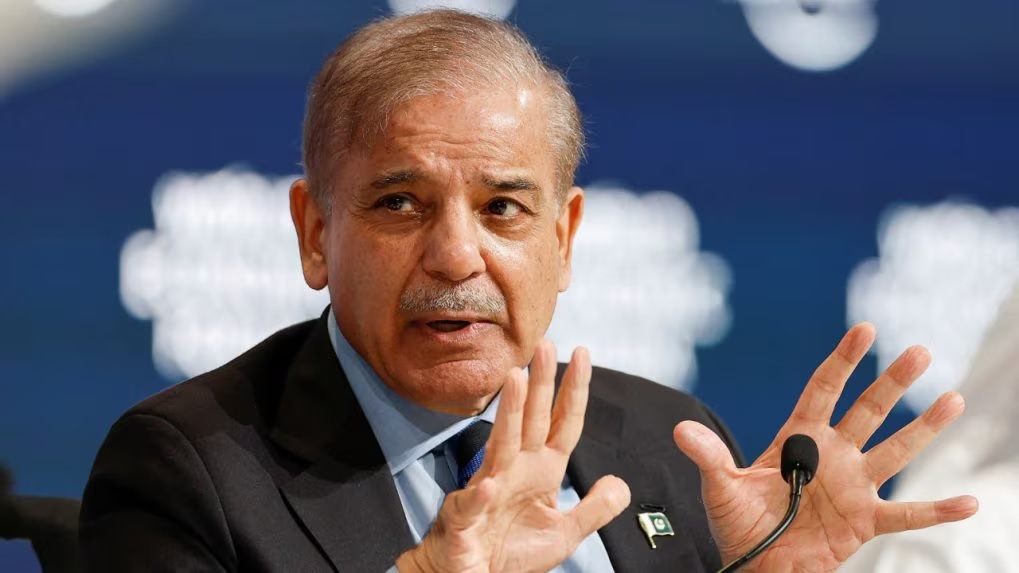 Pakistan Announces 15% Increase in Defence Budget for 2024-25 Amid Economic Crisis
Pakistan Announces 15% Increase in Defence Budget for 2024-25 Amid Economic Crisis
-
 India's Indigenous Kaveri Engine Program with New Focus on Thrust and Performance
India's Indigenous Kaveri Engine Program with New Focus on Thrust and Performance
-
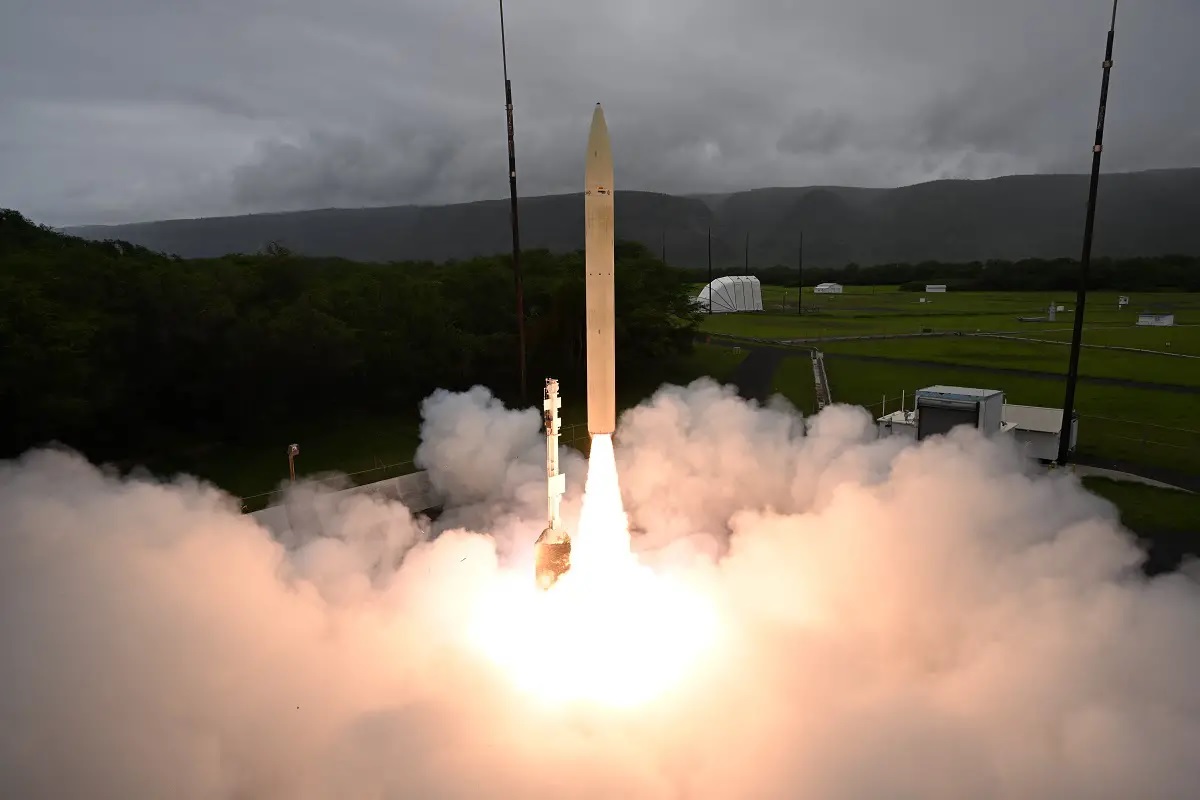 Successful Hypersonic Missile Test by U.S. Department of Defense
Successful Hypersonic Missile Test by U.S. Department of Defense
Top Trending in 4 Days
-
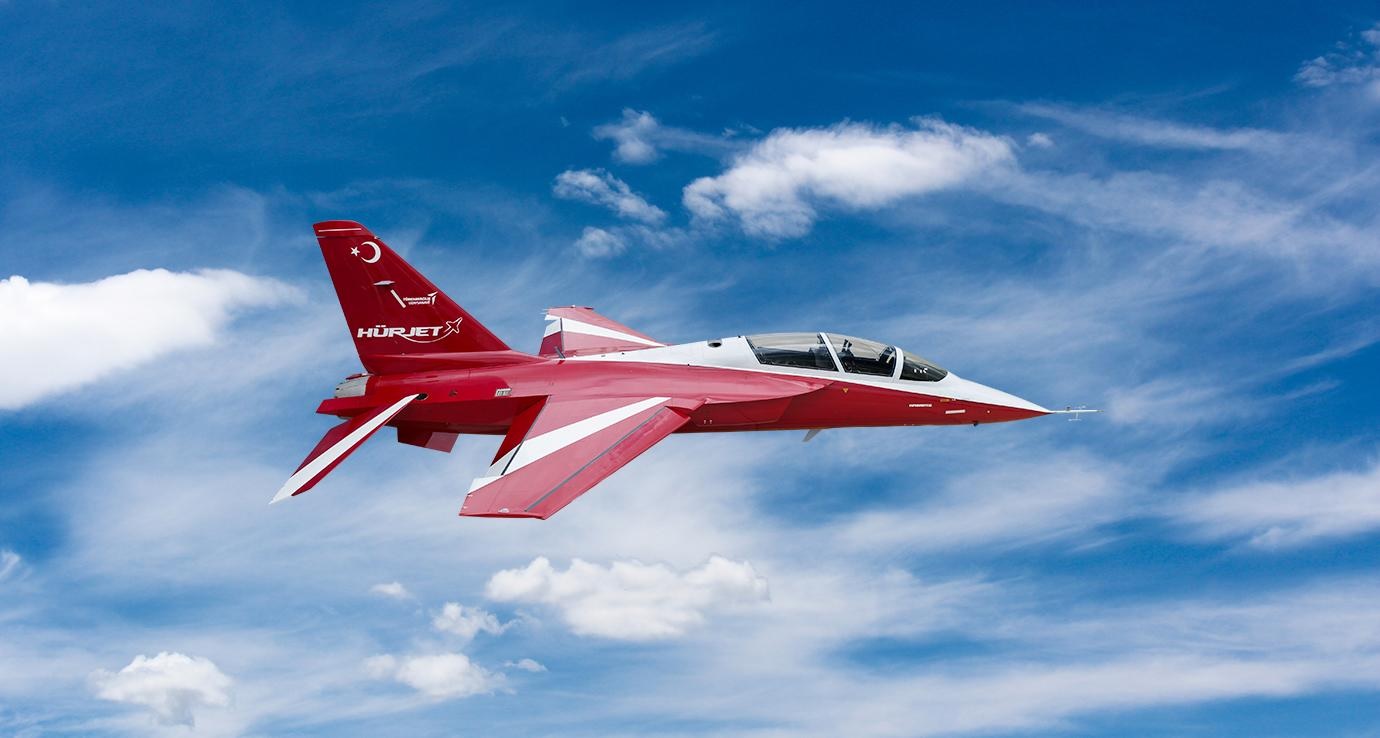 Turkey Seeks US Approval to Acquire GE Engine for Hurjet Fighter Jet
Turkey Seeks US Approval to Acquire GE Engine for Hurjet Fighter Jet
-
 Satellite Tracker Captures Rare Images of Secret U.S. Spy Satellites
Satellite Tracker Captures Rare Images of Secret U.S. Spy Satellites
-
 TEJAS MK-1A Fighter Jet Delivery Delayed by Danish Export Blacklist: HAL’s Race to Indigenize Critical Component
TEJAS MK-1A Fighter Jet Delivery Delayed by Danish Export Blacklist: HAL’s Race to Indigenize Critical Component
-
 How Turkey’s Order of F404 Engines Could Accelerate India's Tejas Mk1A Deliveries
How Turkey’s Order of F404 Engines Could Accelerate India's Tejas Mk1A Deliveries
-
 Rheinmetall and MBDA Germany Partner to Develop Advanced Maritime Laser Weapons for Drone Defense
Rheinmetall and MBDA Germany Partner to Develop Advanced Maritime Laser Weapons for Drone Defense
-
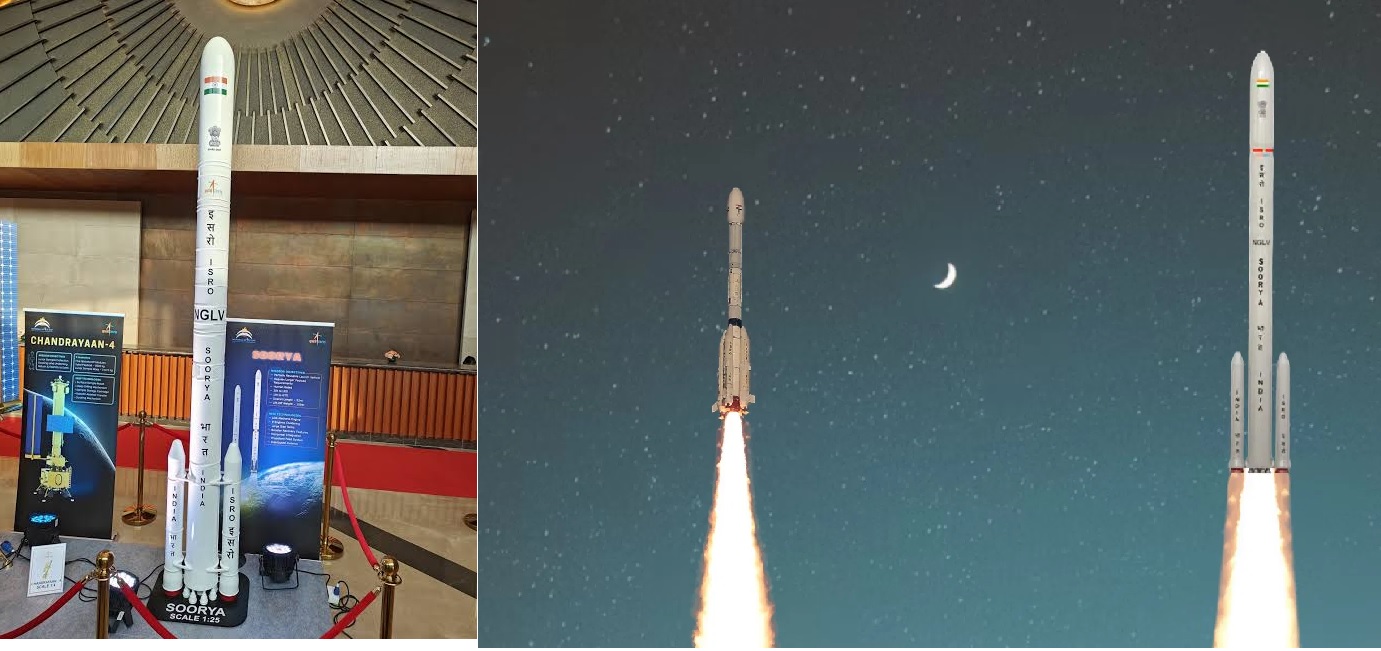 India's Next Leap in Space: Cabinet Approves Development of Next-Gen "SOORYA" Satellite Launch Vehicle
India's Next Leap in Space: Cabinet Approves Development of Next-Gen "SOORYA" Satellite Launch Vehicle
-
 Tejas MkII Assembly to Begin in Bangalore, First Flight Set for Next Year
Tejas MkII Assembly to Begin in Bangalore, First Flight Set for Next Year
-
 Leidos’ Enduring Shield System Successfully Intercepts Drone and Cruise Missile in Major Flight Test
Leidos’ Enduring Shield System Successfully Intercepts Drone and Cruise Missile in Major Flight Test
